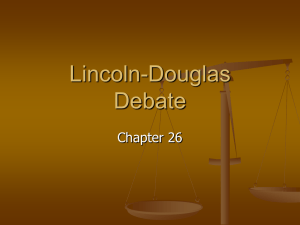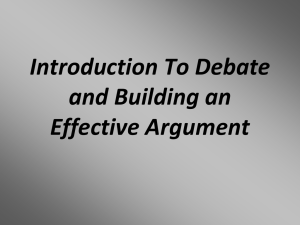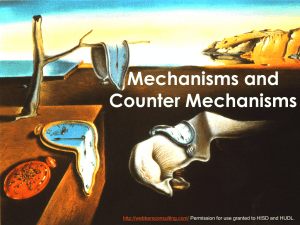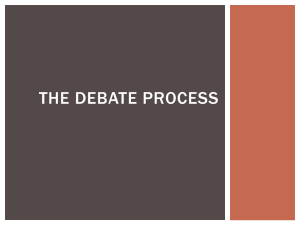Debate Basics: Propositions, Burdens, and Team Roles
advertisement
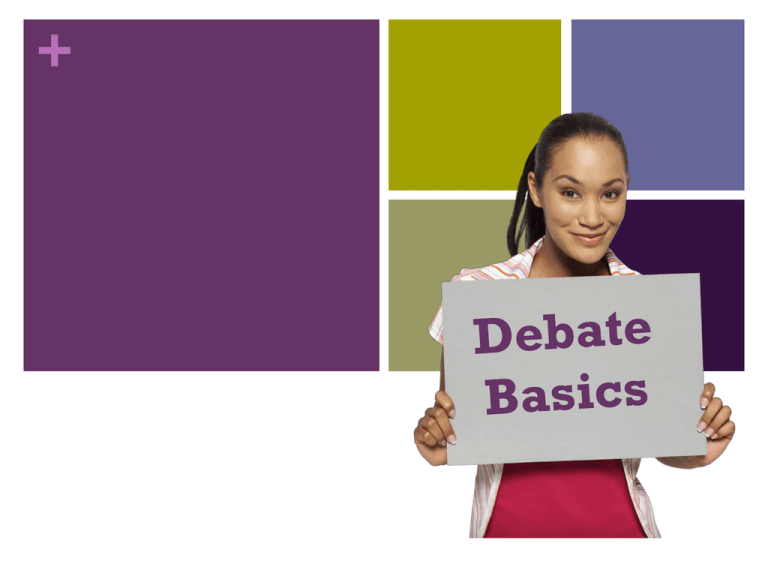
+ + DEBATE A debate is a formal argument in which two opposing teams propose or attack a given proposition or motion in a series of speeches. + THE PROPOSITION, MOTION OR RESOLUTION This is the statement of judgment that identifies the central issue in controversy. A proposition may be one of fact, value or policy. + CHARACTERISTICS OF THE PROPOSITION OF POLICY Clearly state the controversy; Contain only one central idea; Be stated in neutral language; Propose a change in the existing state of things or status quo + EXAMPLE OF A PROPOSITION OF POLICY Resolved: that government should actively encourage the advancement of research on human cloning. + THE BURDEN OF PROOF This is the obligation of the advocates to prove their case, i.e., to provide good and sufficient reasons for adopting the proposition. + TAKE NOTE It is the Affirmative that always carries the burden of proof. One who asserts must prove. + BURDEN OF REBUTTAL OR REFUTATION This is the obligation to counter or oppose arguments that harm one’s position. + TAKE NOTE While the burden of proof always stays with the Affirmative, the burden of rebuttal shifts between the two sides as the debate progresses. + STOCK ISSUES These are standard claims that are applicable to many propositions. + STOCK ISSUES For policy debates, the stock issues are drawn from three basic elements: justification (necessity), plan (practicability), and advantages (beneficiality). + JUSTIFICATION (NECESSITY) Looks into the need (or lack of need) for the policy change and discusses the presence (or absence) of an inherent flaw in the status quo. + PLAN (PRACTICABILITY) Considers the feasibility (or lack of feasibility) of the policy change and includes matters of law and finance. + ADVANTAGES (BENEFICIALITY) Discusses advantages (or disadvantages) of adopting the change and mentions specific beneficiaries and benefits. + DEBATE GROUPS S.Y. 2013-2014 (A table of random numbers was generated to determine the group composition.) + Group 1 18 25 15 13 24 10 37 17 38 35 + Group 2 16 34 23 28 1 39 27 3 9 22 + Group 3 21 14 6 12 11 30 20 33 32 5 + Group 4 4 8 36 31 26 40 29 2 7 19 + THE DEBATE TEAM + Team Leader She will be responsible for mobilizing the group. She will also be one of the debaters/speakers. + Two Other Debaters/Speakers They will represent and give voice to the team’s stand during the class debate. + Two Scribes They help prepare the team’s stand. They take note of the other team’s points and help formulate responses or counterarguments. If a speaker is absent or is unavailable, one of the scribes takes her place. + Four to Five Researchers They supply the team with matter, i.e., evidence to support its stand.
